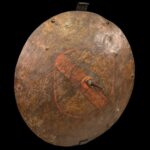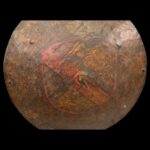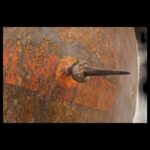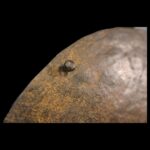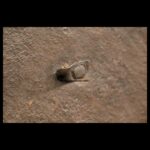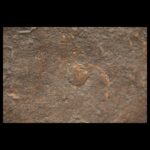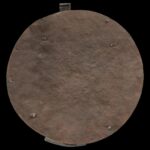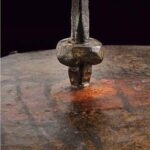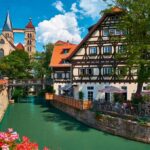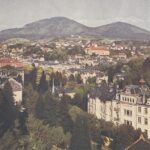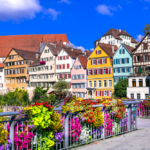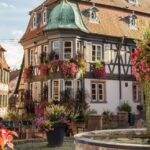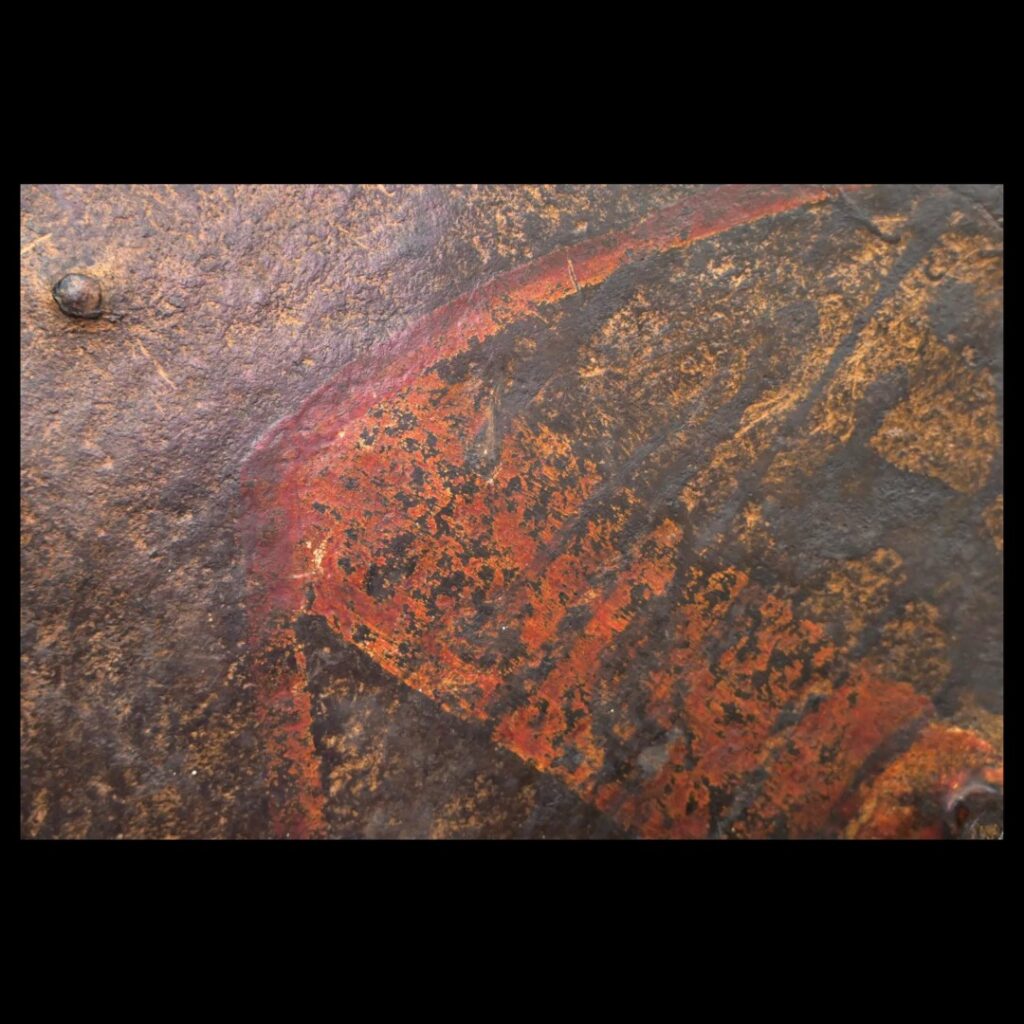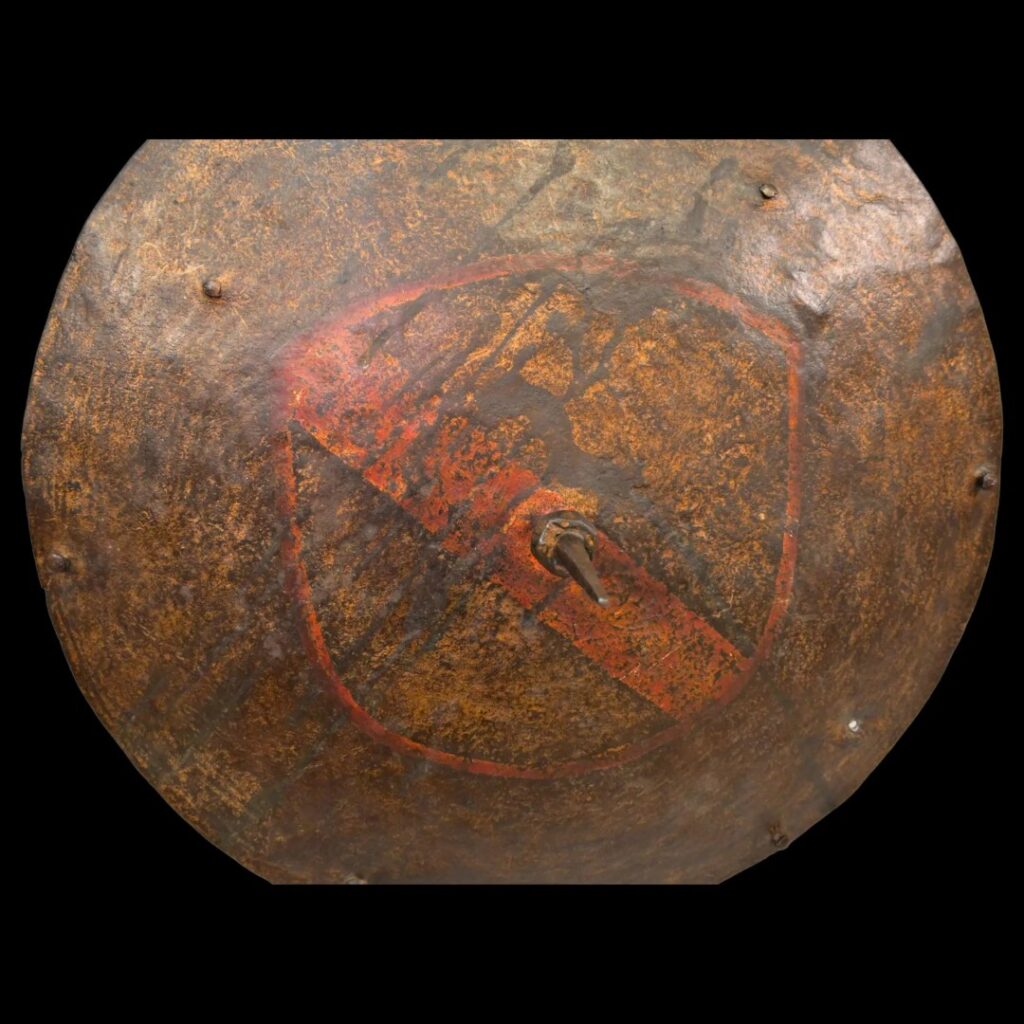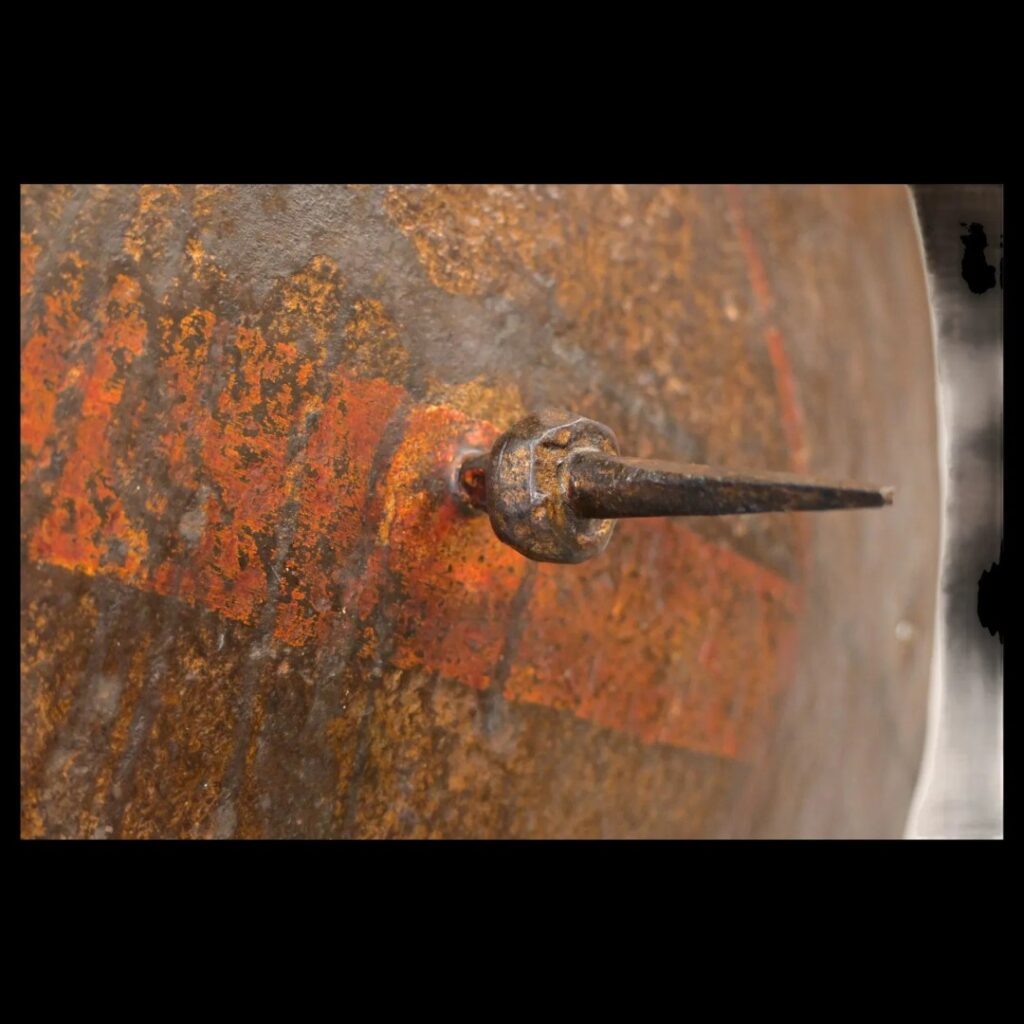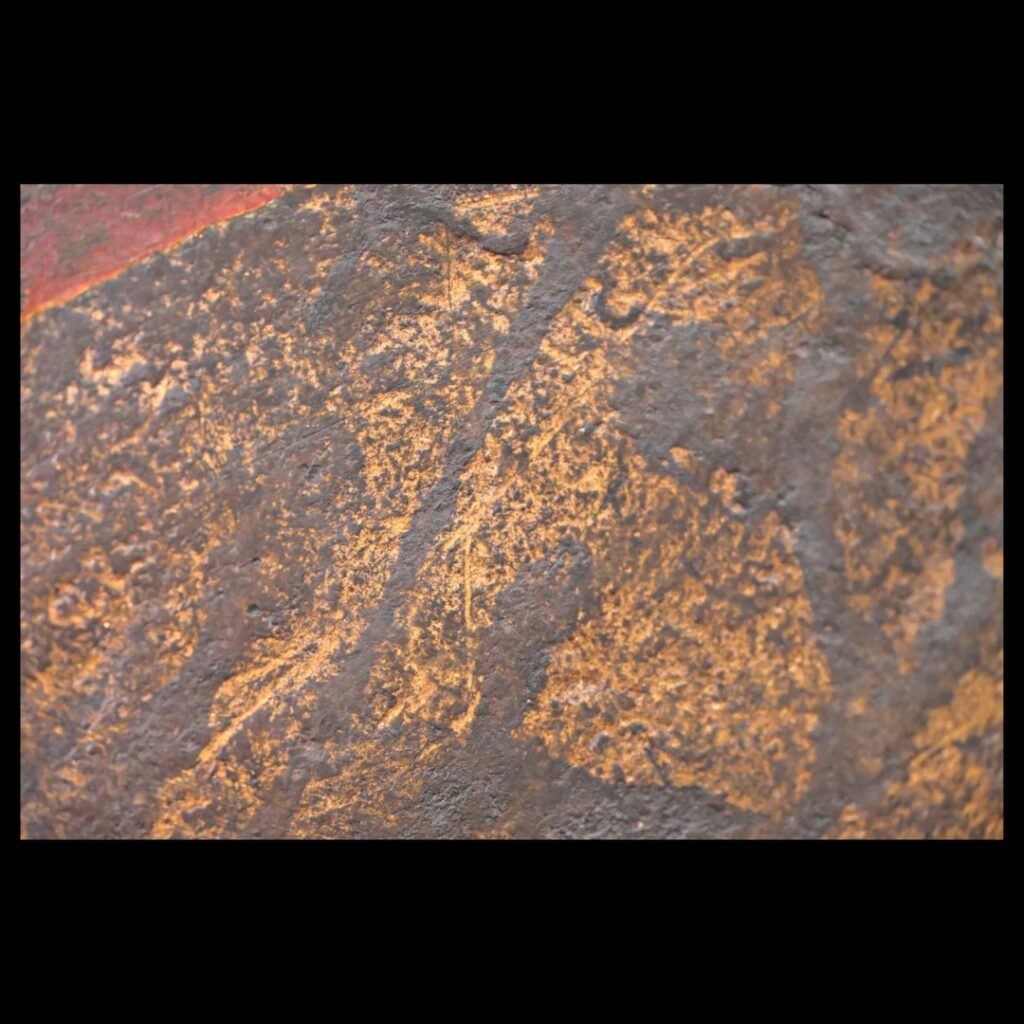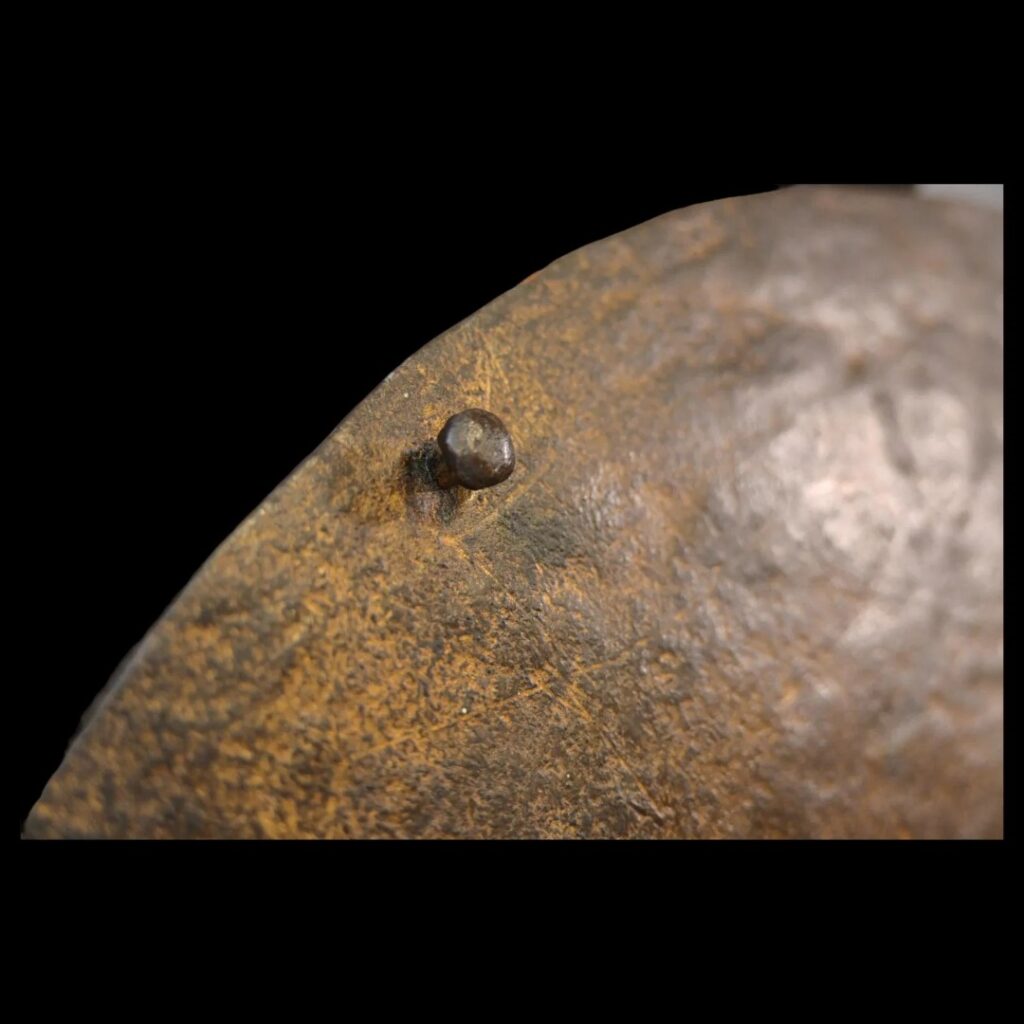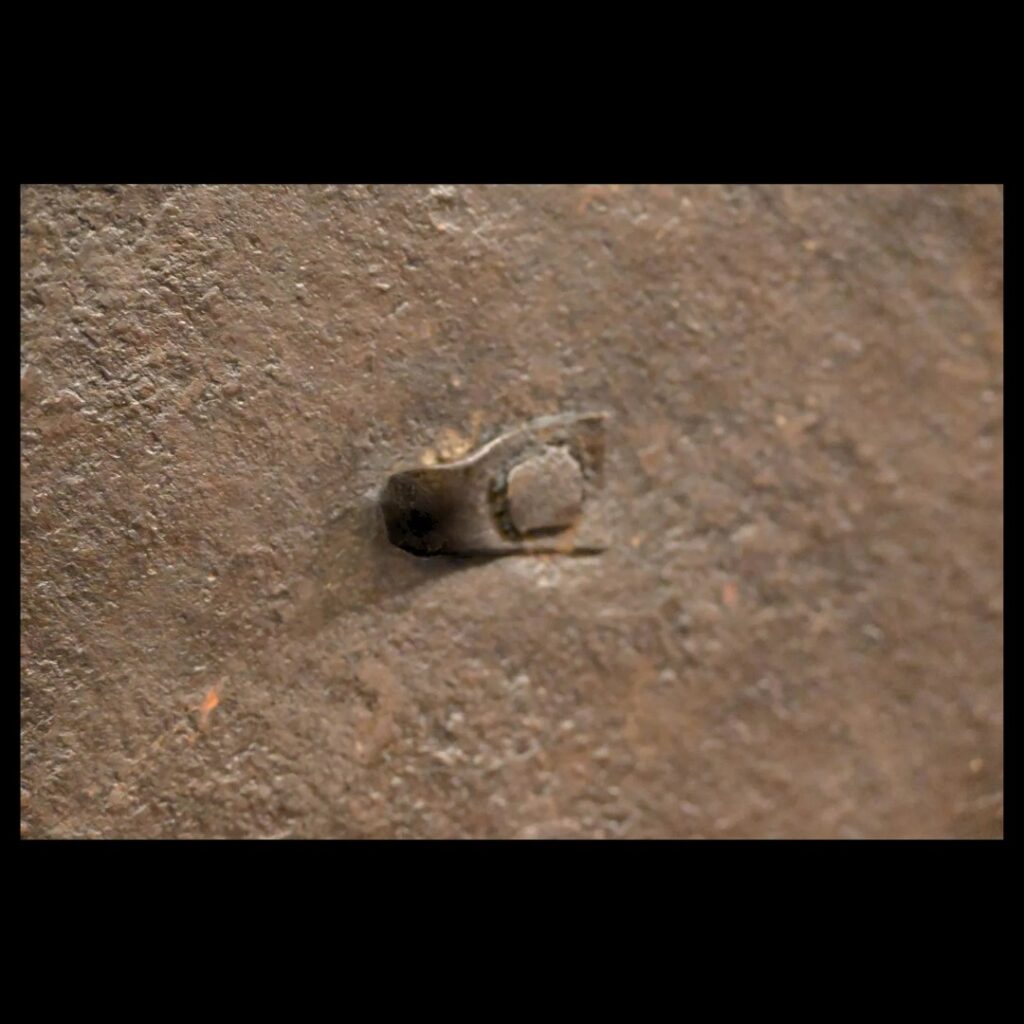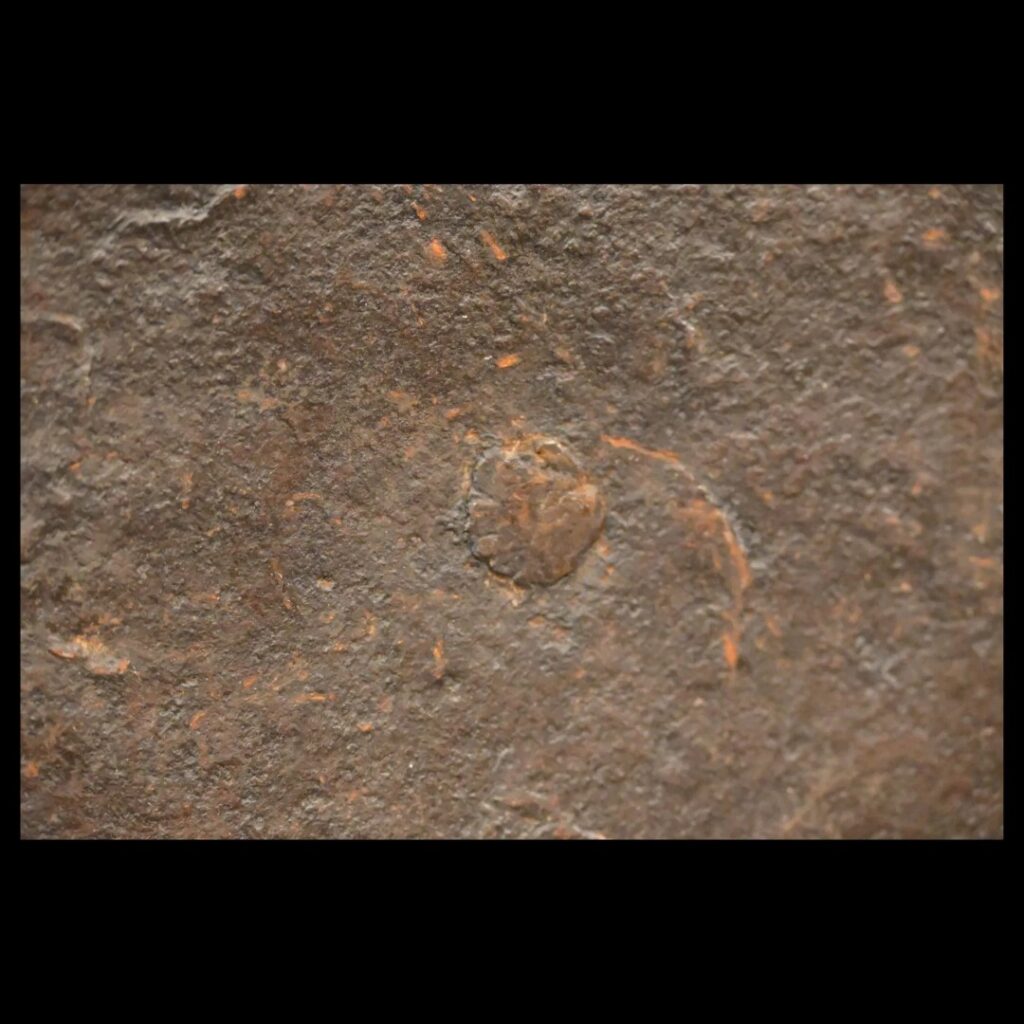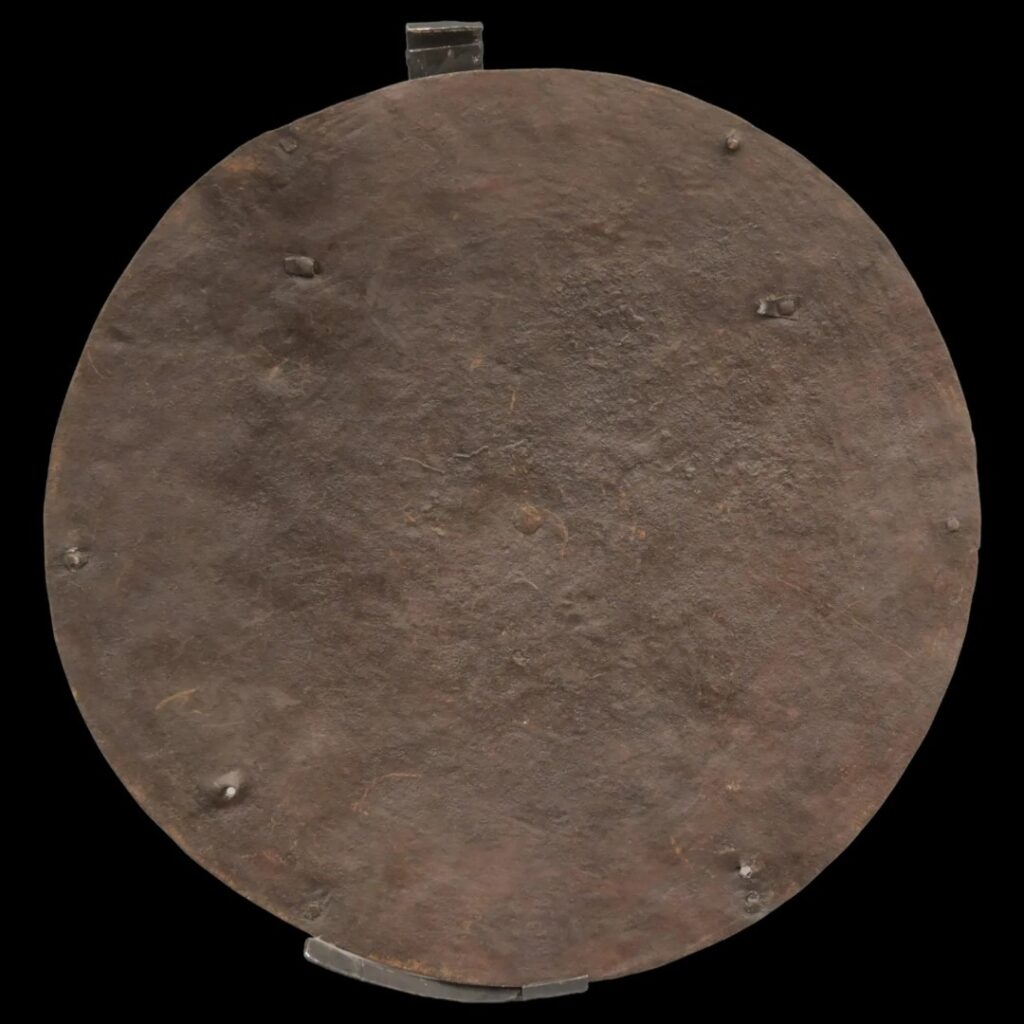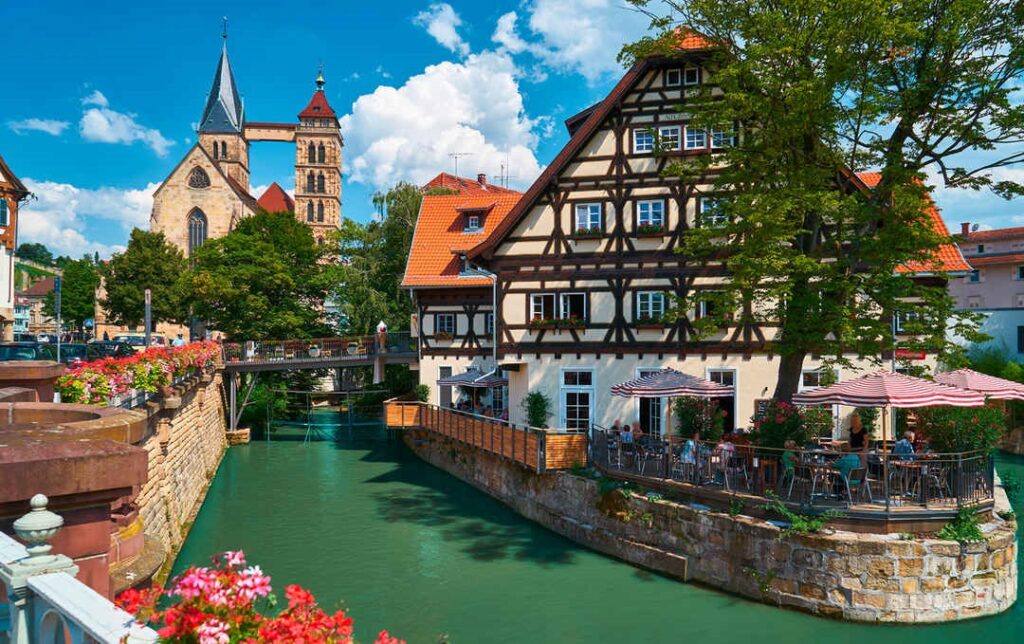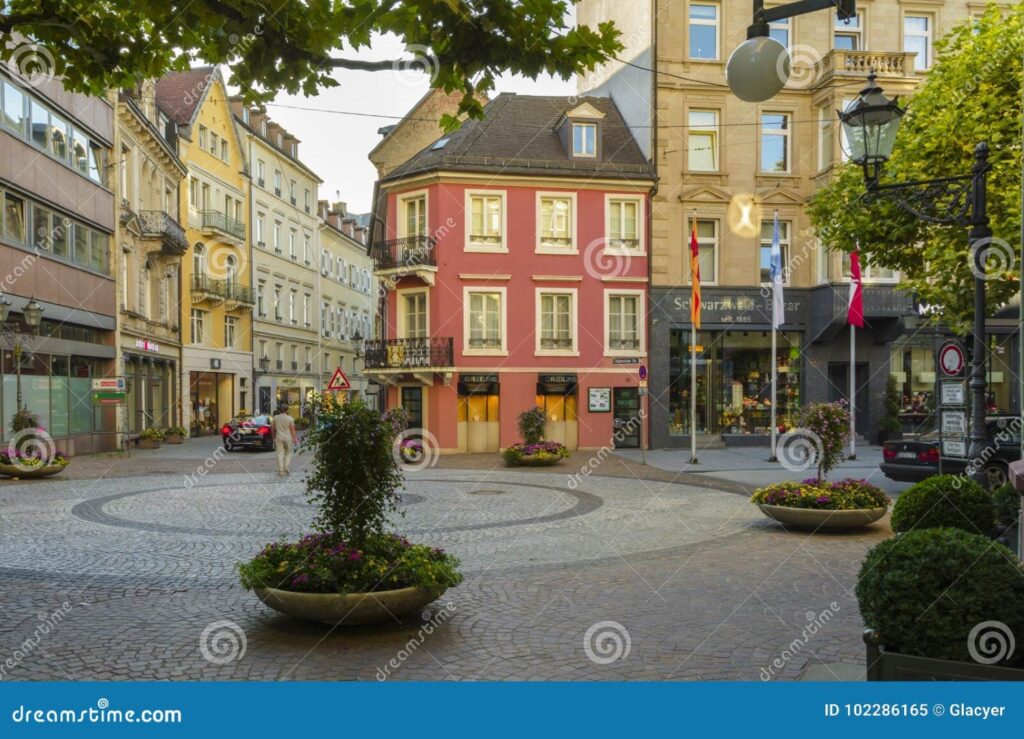1697) FIRE GUILDED SHIELD WITH THE COAT OF ARMS OF THE TOWN OF BADEN-BADEN CIRCA 1570: Used by the guard of the City of Baden-Baden.
Description: A shield constructed of low carbon steel decorated with mercury fire gilding throughou
Dimensions: 54,5 cm.
Place of Manufacture: Almost certainly Nurenburg, Germany.
Discussion: The story of the shield in Europe begins with our old friend, the Bayeux Tapestry (see page 51 in my book). The Normans and Saxons used different shields. • The Saxon shield was circular, oval, and concave (see page 403-A). • The Normans carried kite-shaped, concave shields (see page 403-B). Until the 1500s, shields shared the same construction method, mainly wood covered in gesso canvas with strips of metal or horn as reinforcement. The shield was borrowed from the tradition of the Roman legions. The Romans used to paint the symbol of the legions to which they belonged on the shields used by their troops so that they could easily be distinguished from the opponents’s army, even from a distance. Not only did the Medieval/Renaissance shield offer protection during combat, but it also served as a differentiation between enemies and friends during ongoing battles.
After 1450, shields began to lose popularity. By now, full-body plate armor was widely used, making the shield much less important than in the past. However, with the popularity of half and three-quarter armor circa 1550, shields once again came into vogue. Shields were used by the infantry and private and civic guards (see page 161 in my book).
Baden-Baden is a town in the state of Baden-Wurttemberg in south-western Germany at the north-western border of the Black Forest mountain range on the small river Oos, ten kilometers (six miles) east of the Rhine, which is the border with France. The Roman settlement at Baden-Baden has been dated as far back as the Emperor Hadrian. The springs at Baden-Baden were known to the Romans as Aquae.
Condition: Good- much of the original fire gilding is still highly visible.
Conclusion: This typology of shield is rare and highly sought after by collectors and museums. Pictures do not do it justice. Seldom does a shield like this make it into the collectors or curatorial market. Items in the collectors market that can be easily provenanced, such as this one, are in high demand because their history and purpose are known. This creates a great opportunity for you. ACT-NOW, this one should sell quickly!!!*

